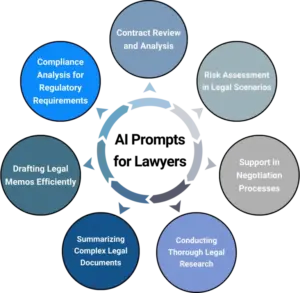Limitation of liability clauses is a critical component of contracts, offering protection to parties involved by defining the amount of liability they can be held responsible for. These clauses are essential in high-risk industries where the potential for financial loss or damages is significant. By outlining the extent of liability, parties can mitigate their exposure to financial risk and potential lawsuits.
While limitation of liability clauses provide essential protection, they must be carefully drafted to ensure they are enforceable and provide adequate coverage. In this blog, we will explore the essence of limitation of liability clauses and their importance in various industries. We will also discuss key components of effective liability limitation clauses and provide drafting tips for clarity and enforceability.
Limitation of liability clauses is really important in contracts for both businesses and people. They help everyone involved know how much risk they’re taking on. By understanding these clauses, parties can talk about and agree on terms that keep them safe and protect their interests. Let’s break down what these clauses mean and why they matter in contract law.
Understanding Limitation of Liability Clauses

Limitation of liability clauses is really important in contracts. They decide how much someone is responsible for if things go wrong or there’s damage. These clauses help keep the financial risk low and make sure nobody gets sued for too much money if the contract doesn’t work out.
So, if something goes wrong, everyone knows exactly what they’re on the hook for, and it’s not more than they agreed to. This is great because it makes people feel safer and more secure when they’re signing a contract, knowing they won’t be held responsible for more than they can handle.
When people include a limitation of liability clause, they’re making sure they won’t be on the hook for huge amounts of money if something goes south. It’s crucial for everyone involved to talk about and agree on these terms based on what they need and what the contract is about. This way, both businesses and individuals can protect themselves from too much liability and make sure any damages or losses are reasonable.
Limitation of Liability in Contracts
Limitation of liability clauses is like safety nets in contracts. They’re there to make sure one party doesn’t have to pay too much if something goes wrong. These clauses say the most money one party can be asked to pay if there’s a problem. So, it sets a boundary on how much trouble they could get into.
By having these limits, both sides can feel safer because they know they won’t be hit with huge bills or dragged into long legal battles. It’s like having a clear line drawn in the sand to keep everyone’s risks in check.
In contracts, limitation of liability clauses is important for both parties to understand what they’re responsible for. These clauses make it clear how much one party can be blamed for any problems or damages. It’s important to remember that these rules only affect the people who signed the contract, not anyone else. Everyone involved should talk about and agree on these rules to make sure they’re fair for everyone.
Related Article: Contract Disputes: A Comprehensive Guide
Key Components of Effective Liability Limitation Clauses

Effective liability limitation clauses need to have important parts that make things clear and protect everyone involved. These parts help ensure that the clauses are fair and can help lessen the risk of losing money if there’s a problem with the contract.
First, it’s crucial to say exactly how much someone has to pay if something goes wrong. This could be a specific amount of money or a percentage of what the contract is worth. It should also mention what kinds of problems are covered, like if someone breaks the contract or does something wrong on purpose.
It’s like setting rules for when and how much someone can get in trouble. This helps everyone understand what they’re agreeing to and what could happen if things don’t go well. Another important thing is to mention any situations where the liability limit might not count. These could be cases involving lying, doing something really bad on purpose, or breaking certain rules in the contract.
By including these exceptions, it keeps everything clear and makes sure everyone knows when the limit on liability doesn’t apply. This helps lower the risk and makes contracts easier to understand. Lastly, it’s good to talk about how to solve problems and figure out who’s responsible if things go wrong. This way, everyone knows what to do if there’s an issue, and the clauses are easier to use if there’s a disagreement.
Scope and Applicability
What limitation of liability clauses cover can change based on the contract’s terms and the industry it’s in. Though each contract might have its own rules, there are usually a few things these clauses deal with, like:
- Breach of contract: These clauses often limit liability in case of a breach of contract, ensuring that the non-breaching party’s damages are limited to a specific amount or type of damages.
- Negligence: Liability for negligence can also be limited by these clauses, protecting parties from excessive financial risks arising from unintentional acts or omissions.
- Indemnification: Limitation of liability clauses may address the extent to which parties can seek indemnification from each other in case of third-party claims or disputes.
- Consequential damages: These clauses often limit liability for consequential damages, such as lost profits or business opportunities, which may be difficult to quantify.
Related Article: What Are Contractual Obligations? Your Master Guide
Comparative Analysis of Limitation Clauses Across Industries

Limitation of liability clauses is not one-size-fits-all and can vary significantly across industries. Each sector has its own unique risks and requirements, which must be considered when drafting these clauses. Let’s take a closer look at the application of limitation of liability clauses in three key industries:
Technology Sector
Limitation of liability clauses in software agreements plays a crucial role in protecting software developers and vendors from potential lawsuits and financial risks. These clauses define the extent of liability that the developer or vendor can be held responsible for in case of software errors, performance issues, or other damages.
In software agreements, parties typically negotiate the terms of limitation clauses to ensure that they are fair and reasonable. Here are some key aspects to consider when drafting limitation of liability clauses in software agreements:
- Monetary limits: The clause may specify the maximum amount of financial responsibility that the developer or vendor can be held accountable for.
- Types of damages: The clause may outline the specific types of damages that are covered or excluded, such as direct damages, indirect damages, or consequential damages.
- Exclusions or carve-outs: The clause may include exceptions where liability cannot be limited, such as willful misconduct, intentional misrepresentation, or breach of specific obligations.
Construction and Engineering
Construction and engineering projects are inherently complex and involve various stakeholders, including contractors, engineers, and project owners. Limitation of liability clauses play a crucial role in managing project risks and protecting parties involved from excessive liability.
- Errors and omissions: The clause may limit liability for design errors, construction defects, or professional negligence.
- Delays and disruptions: Parties may seek to limit liability for project delays or disruptions caused by unforeseen circumstances or events beyond their control.
- Indemnification: The clause may outline the extent to which parties can seek indemnification from each other in case of third-party claims or disputes.
- Insurance requirements: Parties may include specific insurance requirements to ensure adequate coverage for potential liabilities.
Healthcare and Pharmaceuticals
In the healthcare and pharmaceutical industries, patient safety is of utmost importance. However, healthcare providers and pharmaceutical companies also need to protect themselves from excessive liability. Limitation of liability clauses strike a balance between patient safety and liability management.
- Medical malpractice: The clause might reduce how much someone has to pay for mistakes or not being careful, making sure healthcare providers don’t have to deal with huge money problems.
- Product liability: Pharmaceutical companies might want to lessen how much they’re responsible for if their products cause any bad effects or harm, as long as they follow the rules set by regulators.
- Informed consent: The clause might explain what patients need to do to agree to medical procedures, treatments, or medicines in a way that they understand.
- Standard of care: Parties might add rules that say what level of care is expected and what the limits are for being responsible within that level of care.
Related Article: Breach Of Contract: Master How To Resolve Legal Disputes
Drafting Tips for Limitation of Liability Clauses

Drafting effective limitation of liability clauses requires meticulous attention to detail and an understanding of the nuances of contract law. To ensure these clauses are both clear and legally enforceable, it’s essential to follow best practices in contract drafting. Here are some key considerations to keep in mind:
- Use Clear and Unambiguous Language: Ensure that the language used in the clause is precise and easily understandable. Avoid vague terms or ambiguous phrases that could lead to disagreements or interpretation disputes later on. Using straightforward language helps all parties involved to understand their obligations and liabilities clearly. For example, instead of using phrases like “to the fullest extent permitted by law,” specify the exact scope of liability, such as “not to exceed X dollars.”
- Define the Extent of Liability: Clearly define the maximum financial responsibility that each party can be held accountable for in case of breach, damages, or other liabilities. This could involve specifying a monetary limit, a percentage of the contract value, or outlining the types of damages covered. For instance, you might state that “in no event shall the total liability exceed [X] times the contract value” or “liability is limited to direct damages only.”
- Consider the Context of the Clause: Tailor the limitation of liability clause to the specific context of the contract, taking into account the particular risks, obligations, and industry standards involved. What works in one contract may not be suitable for another, so it’s important to customize the clause accordingly. For example, in a software development contract, the clause may address issues like software errors, performance issues, or data breaches, while in a construction contract, it may focus on design errors, delays, or disruptions.
- Review and Update Regularly: Contracts and business landscapes evolve over time, so it’s crucial to regularly review and update the limitation of liability clause to ensure it remains relevant and effective. This could involve revisiting the clause during contract negotiations or periodically as part of contract management practices. Regular updates help to ensure that the clause reflects any changes in the business environment, industry regulations, or emerging risks, thus maintaining its effectiveness in mitigating liability.
By adhering to these drafting tips, parties can create limitation of liability clauses that provide clarity, protection, and peace of mind for all involved.
Related Article: Master Contract Generation: A Comprehensive Guide
Common Pitfalls to avoid while drafting Limitation of Liability Clause

When drafting limitation of liability clauses, it’s crucial to steer clear of common pitfalls that could undermine their effectiveness or enforceability. Here are some pitfalls to watch out for and how to avoid them:
- Ambiguity/Vagueness: One of the most significant pitfalls is drafting language that is ambiguous or vague. Ambiguity can lead to disputes over interpretation, potentially rendering the clause unenforceable. To avoid this, use specific and clear language that leaves no room for misunderstanding. For instance, instead of stating “to the extent permitted by law,” specify the exact limitations and liabilities, such as “liability is limited to [X] amount” or “only direct damages are covered.”
- Exclusion of Essential Liabilities: Another pitfall is failing to consider all essential liabilities when drafting the clause. Carefully assess the contract’s obligations and potential risks to ensure that no critical liabilities are unintentionally excluded from the limitation of liability clause. For example, if there are specific obligations that parties cannot limit liability for, such as intentional misconduct or breaches of confidentiality, make sure to include carve-outs for these in the clause.
- Failure to Consider Future Changes: Contracts and business environments evolve over time, so failing to consider future changes can render a limitation of liability clause ineffective. Anticipate potential developments or risks that may arise during the contract’s term and include provisions that address these contingencies. For instance, include language that allows for the adjustment of liability limits in the event of significant changes in circumstances, industry regulations, or technology.
- Improper Negotiation/Consideration: Parties must engage in fair negotiations and provide adequate consideration for the limitation of liability clause to be enforceable. Failure to do so could result in the clause being deemed unenforceable by a court. Ensure that both parties fully understand the implications of the limitation of liability clause and that there is mutual agreement on its terms. Additionally, ensure that each party receives sufficient consideration in exchange for accepting the limitations on liability.
By avoiding these common pitfalls and adhering to best practices in drafting limitation of liability clauses, parties can create agreements that effectively manage risks and protect their interests.
Related Article: Contract Negotiation: Proven Strategies For Collaboration
FAQs
What Are Common Misconceptions About Limitation of Liability Clauses?
Some people think that limitation of liability clauses can protect against any kind of responsibility, or that they work for anyone involved in a contract, or even that they can completely get rid of responsibility for mistakes or bad behavior. But it’s crucial to know that these clauses are looked at really closely by the law and need to be written carefully to actually work.
How can a limitation of liability clause protect a business or individual?
A limitation of liability clause can protect a business or individual by defining the extent to which they can be held responsible for damages or losses in case of breach or other liabilities. It sets boundaries for liability, mitigating financial risk and potential lawsuits.
What are some common mistakes to avoid when drafting a limitation of liability clause?
When you’re writing a limitation of liability clause, it’s important not to use words that aren’t clear or could mean different things. Also, make sure you don’t leave out important stuff that should be covered.
Think about what might happen in the future or how things might change, and include that in your clause. And when you’re talking about it with someone else, make sure you both agree and think carefully about what’s fair. Parties should be mindful of these mistakes to ensure the effectiveness of their clauses.
Conclusion
In the world of contracts, understanding the limitation of liability clauses is super important for keeping yourself safe and secure. Limitation of liability clauses are kind of like shields. They decide how much you’re responsible for and keep you safe from unexpected problems.
By understanding these clauses really well and keeping track of how they’re changing in different industries, you can make really good clauses that last a long time. It’s like learning all the little details of something to do it well. So, by knowing all this stuff, you can make sure you’re protected and your contracts stay strong.
It’s kind of like learning the rules of a game so you can play well and avoid making mistakes. To do this, you can learn from the best practices, avoid common pitfalls, and keep an eye on how contract laws are changing. By having this knowledge, you’ll be empowered to make informed decisions and reduce any potential risks effectively. So, knowledge really is power when it comes to navigating the complexities of limitation of liability, helping you protect your interests and ensure clarity and enforceability in your contracts.





